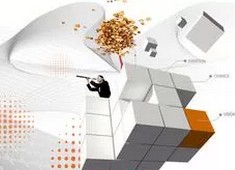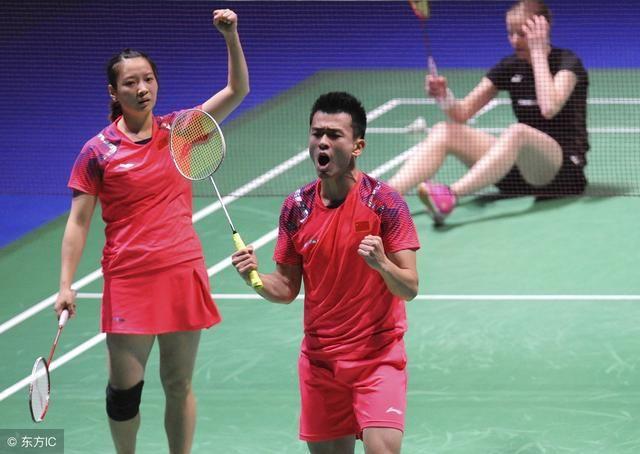体育班管理经验
Title: Effective Management Strategies for Sports Classes
Introduction

Managing a sports class requires a blend of organizational skills, motivational techniques, and a deep understanding of both sports and pedagogy. A wellstructured PowerPoint presentation can serve as a valuable tool for conveying information, engaging participants, and optimizing the learning environment. Below are some key points to consider when creating a sports class management PowerPoint presentation.
1. Setting Objectives and Goals
Begin your presentation by outlining the objectives and goals of the sports class. Clearly define what students will learn and achieve throughout the course. Emphasize the importance of setting realistic and measurable goals to keep students motivated and focused.
2. Understanding Student Needs
Every student is unique, with different abilities, interests, and learning styles. Tailor your sports class management strategies to accommodate these individual needs. Consider conducting a survey or assessment to gather information about students' preferences and abilities, and use this data to customize your teaching approach.
3. Creating a Structured Curriculum
Develop a structured curriculum that covers essential skills, techniques, and concepts relevant to the sport being taught. Organize the content into logical units or modules, and clearly outline the sequence of topics to be covered. Incorporate a variety of instructional methods, such as demonstrations, drills, and group activities, to keep students engaged and active.
4. Promoting Safety and Wellness
Safety should always be a top priority in sports classes. Dedicate a section of your presentation to discussing safety guidelines, equipment usage, and injury prevention strategies. Emphasize the importance of proper warmup and cooldown routines, hydration, and rest for maintaining overall wellness and minimizing the risk of injuries.
5. Fostering Positive Relationships
Build rapport and trust with your students to create a positive and supportive learning environment. Encourage open communication, provide constructive feedback, and recognize students' efforts and achievements. Foster a sense of teamwork and camaraderie among students by promoting collaboration and sportsmanship.
6. Incorporating Technology and Multimedia
Integrate technology and multimedia elements into your PowerPoint presentation to enhance engagement and comprehension. Use videos, animations, and interactive graphics to demonstrate techniques, illustrate concepts, and provide visual examples. Incorporate relevant apps or software tools that can supplement learning and offer opportunities for practice outside of class.
7. Assessing Progress and Providing Feedback
Regularly assess students' progress and skill development throughout the sports class. Use both formal assessments, such as quizzes or skill tests, and informal observations to gauge learning outcomes. Provide timely and constructive feedback to help students identify areas for improvement and track their growth over time.
8. Encouraging Lifelong Participation
Instill a passion for sports and physical activity that extends beyond the classroom. Encourage students to pursue opportunities for continued practice, competition, and recreation outside of the sports class. Highlight the benefits of regular exercise and active lifestyles for overall health and wellbeing.
Conclusion
Effective management of sports classes requires careful planning, clear communication, and a commitment to meeting the diverse needs of students. By incorporating these strategies into your PowerPoint presentation, you can create a dynamic and engaging learning experience that fosters skill development, promotes safety and wellness, and instills a lifelong love of sports.
欧洲杯直播
MORE>-
09-20《摩纳哥与巴萨的激情碰撞》
-
09-19加纳乔本赛季造球超过姆巴佩,近天进球和桑乔今年一样多
-
09-19制造胜率高达%,仅次于弗格森!滕哈格真是杯赛专家?
-
09-19孔帕尼三连胜:执教拜仁开启追求蓝图的新篇章
-
09-18破案了!国足换帅叫停原因找到,强赛计划有变,伊万阴谋得逞
-
09-18杨政回应未通过体测:早知道要体测就不参选已尽力否认嘲笑牟进宏
-
09-18贾巴里·史密斯:火箭的完美副手与宝贵特质
-
09-18不愧名帅!水庆霞近轮豪取分:击败女足卫冕冠军武汉!
-
09-18韩网评选世界赛阵容竟落选
-
09-17孙杨张豆豆晒合照送中秋祝福
-
09-16王楚钦输球是假球?许昕说实话了→
-
09-16阿塞拜疆正赛:皮亚斯特里夺冠,塞恩斯&佩雷兹退赛
-
09-16冠军战霸气完封波多黎各,日本棒球队世界杯夺冠,缔造连霸
-
09-15周六德甲:莱比锡红牛柏林联合
-
09-15全国田径锦标赛:谢震业迎奥运后首秀,秒小组第晋级
-

2024今晚香港开特马开什么六期,答案解析解释落实掌握天下事_中级版33.291
在2024年的香港特马开奖活动中,众多彩民和观众都在关注着每一期...
-

2024年新澳门王中王资料,答案解析解释落实掌握天下事_3D6.3
在信息爆炸的时代,掌握最新的资讯成为了每个人不可或缺的能力。20...
-

最准一肖一码100%中,答案解析解释落实掌握天下事_辅助版2.11
在博弈领域,”最准一肖一码100%中”这一说...
-

黄雅琼黄凯祥分手事件解析
黄雅琼和黄凯祥是一对知名的明星情侣,他们的分手事件引起了广泛关注。在...
-

最准一肖一码100%香港78期,答案解析解释落实掌握天下事_平台版8.52
在当今信息爆炸的时代,人们对于获取准确信息的需求日益增长。特别是在博...
- 搜索
- 最近发表
- 标签列表
-
- 2024年欧洲杯主办国 (17)
- 2024欧洲杯比赛时间 (20)
- 欧洲杯参赛球队有几支 (9)
- 2024欧洲杯百度百科 (21)
- 2024欧洲杯杯 (9)
- 2024年欧洲杯预选赛 (14)
- 2024年欧洲杯开幕时间 (10)
- 2024欧洲杯完整赛程表 (10)
- 2024欧洲杯主办城市 (17)
- 欧洲杯为什么没有中国 (13)
- 在哪里可以看欧洲杯预选赛 (11)
- 2024欧洲杯预选赛 (11)
- 欧洲杯在哪个国家举行2024 (12)
- 2024欧洲杯全部赛程 (10)
- 欧洲杯为什么没有直播 (15)
- 欧洲杯一共多少球队 (13)
- 欧洲杯历届冠军一览表 (10)
- 欧洲杯 (14)
- 欧洲杯赛程 (11)
- 直播吧官网 (10)
- 足球即时完整比分 (12)
- 2022年世界杯 (12)
- 直播8 (10)
- 直播吧 (21)
- 直播软件 (10)
